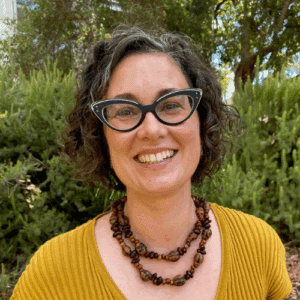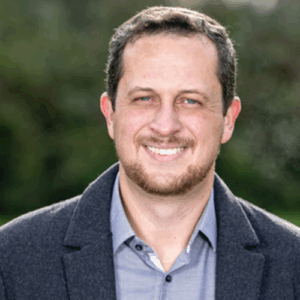Earlier this year, we invited proposals for driving the mitigation of and adaptation to improve the health of those most at risk from the climate emergency. The winning participants have been selected and will take part in Innovation Thinktank at our Global Climate and Health Summit. This is an opportunity for the participants to present their idea or project in front of hundreds of global climate experts, industry representatives and funders at our hybrid Summit on 17 July.
Hear from three more of the winning participants of the competition: Odongo Shadrack, Caitlin Wyrwoll and Erick Sperandio Nascimento. In this blog, find out more about their innovative solutions to tackle climate and health across the Summit’s three strands, Heat Resilience, Sustainable Nutrition, and Air Pollution and Indoor Air Quality.
Sustainable Nutrition
How solar energy and information technology can reduce under nutrition in Africa

Odongo Shadrack, Gulu University, Uganda
My proposal calls for the investment in solar energy and farm machinery in Africa to reduce under nutrition using climate friendly measures.
Africa is endowed with fertile soils, good sunshine and rainfall. Despite all these endowments, Africa continues to be plagued by famine, long periods of drought and subsequently under nutrition due to food scarcity in dry seasons. My proposal shows how Africa can use information technology, ample sunshine and financial institutions to provide environmentally friendly solutions to tackle under nutrition. It is based on a model that would provide farmers in low-income countries access to solar water pumps in collaboration with financial institutions and telecommunications companies.
Financial institutions would offer credit to farmers to acquire a solar water pump from a solar energy company to help with crop irrigation in adverse heat conditions and have enough water for livestock. Farmers would pay in instalments, which would be paid electronically using a telephone number tagged to the farmer. Failure to make a payment would disable the solar powered system. Farmer could report progress or seek for help in case of mechanical or technical guidance needed through an app.
This would be piloted in selected areas of Uganda and Kenya. After a careful review, it will be extended to other areas of Africa, Asia and South America.
Heat Resilience
Extreme heat and pregnancy complications

Caitlin Wyrwoll, University of Western Australia
The Extreme Heat and Pregnancy Complications (EHPC) project, funded by the Wellcome Trust, aims to understand the biological vulnerability to extreme heat during pregnancy. Leveraging Australia’s diverse climate zones and comprehensive health data, EHPC employs a transdisciplinary approach, including community co-design, qualitative research, environmental epidemiology, and experimental models. The project will establish the impact of heat on adaptive behaviour and health in pregnancy, epidemiological associations between heat extremes and pregnancy outcomes, and the effects of heat exposure on maternal and fetal physiology.
The findings will inform the development of health education, policy change, and infrastructure schemes to protect pregnant individuals during heatwaves. EHPC’s focus on maternal and child health will benefit priority populations, including Aboriginal and Torres Strait Islanders, migrant communities, and rural populations, ultimately contributing to improved health outcomes and reduced economic implications of pregnancy complications. Addressing this topic requires interdisciplinary and transdisciplinary research methodologies to ensure comprehensive understanding and effective solutions.
Air Pollution
Developing a high resolution spatiotemporal deep learning framework for air pollution forecasting predicting its impacts on human health and finding the best scenarios for emissions reductions from anthropogenic sources for a cleaner air

Erick Sperandio Nascimento, University of Surrey, UK
Air pollution is one of the major environmental causes of human illnesses, premature deaths, and climate change. The WHO estimates that 99% of the global population is exposed to high levels of air pollutants, making them a major threat to climate and health. The recent advances in AI have increased our capability to simulate natural phenomena and thus have the potential to be a game-changer in the intersection of atmospheric and health sciences.
My proposal aims to develop a high-resolution spatiotemporal deep learning framework for air pollution forecasting, predicting its impacts on human health, finding the best intervention scenarios for cleaner air, considering multiple factors such as technologies availability, economic feasibility and social impacts, and enabling stakeholders in identifying the most relevant, feasible and suitable interventions. This will ultimately contribute to achieve the United Nations Sustainable Development Goals: 3 (Good Health and Wellbeing), 11 (Sustainable Cities and Communities), and 13 (Climate Action).
Nine participants will present their projects on 17 July at The Global Climate and Health Summit, which will convene researchers, policymakers, and climate experts to tackle the urgent health challenges posed by climate change.
Odongo Shadrack, Caitlin Wyrwoll and Erick Sperandio Nascimento will be joined by Mory Toure, Simon Kwabena Dankyi, Ana-Catarina Pinho-Gomes, Vida Asah-Ayeh, Silvia Pastorino and Basheer Waziri. Read these blog posts to find out more about the participants and their projects:

